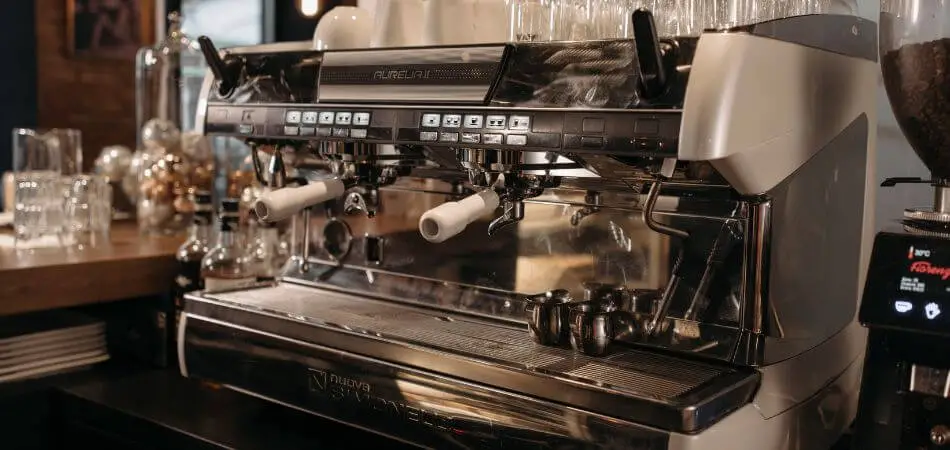How to Descale a Breville Espresso Machine at Home: A Step-by-Step Guide
If you’re a coffee enthusiast, you know that a Breville espresso machine is a game-changer for brewing café-quality coffee at home. But to keep your machine performing at its best, regular maintenance is essential—and descaling is a critical part of that process.
Learning how to descale a Breville espresso machine is simple and ensures your machine stays in top condition. To make descaling easy, I recommend using the official Breville Descaling Solution. It’s specifically designed for Breville machines and ensures a thorough clean without damaging internal components.
In this guide, we’ll walk you through everything you need to know about descaling your Breville espresso machine. From understanding why descaling is important to step-by-step instructions and tips for preventing future buildup, this article will help you keep your machine in top shape and your coffee tasting delicious.
Why Descaling Your Breville Espresso Machine Matters
Descaling is the process of removing mineral deposits (also known as limescale) that accumulate inside your espresso machine over time. These deposits are caused by minerals in water, such as calcium and magnesium, which are more prevalent in hard water areas.
The Benefits of Descaling
- Prolongs Machine Lifespan: Scale buildup can damage internal components, leading to costly repairs or replacements.
- Maintains Coffee Quality: Mineral deposits can affect water flow and brewing temperature, resulting in inconsistent or poor-tasting coffee.
- Prevents Malfunctions: Clogged pipes and overheating are common issues caused by scale buildup.
By learning how to descale a Breville espresso machine, you’ll ensure it operates efficiently and continues to deliver the perfect cup of espresso.

Signs Your Breville Espresso Machine Needs Descaling
How do you know when it’s time to descale your machine? Look out for these common signs:
- Reduced Water Flow: If your machine takes longer to brew or the water pressure seems weak, scale buildup could be the culprit.
- Inconsistent Brewing Temperature: Fluctuating temperatures can lead to under-extracted or over-extracted coffee.
- Unusual Noises: Gurgling or grinding sounds during operation may indicate blocked components.
- Visible Mineral Deposits: White or chalky residue around the water tank or steam wand is a clear sign of scale buildup.
If you notice any of these symptoms, it’s time to learn how to descale a Breville espresso machine and take action.
What You’ll Need to Descale Your Breville Espresso Machine
Before you begin the process of descaling your Breville espresso machine, gather the following supplies:
- Breville Descaling Solution: Specifically designed for Breville machines, this solution effectively removes limescale. You can find the Breville Descaling Solution here.
- Clean Water: For rinsing the machine after descaling.
- Large Container: To catch the water and descaling solution during the process.
- Soft Cloth: For wiping down the exterior of the machine.
If you don’t have the Breville descaling solution, you can use a homemade alternative like a 50/50 mix of white vinegar and water or a citric acid solution.

Step-by-Step Guide: How to Descale a Breville Espresso Machine
Follow these steps to descale your Breville espresso machine safely and effectively:
Step 1: Prepare Your Machine
- Empty the water tank and rinse it to ensure it’s clean.
- Remove the water filter (if your machine has one) and rinse it under clean water.
- Place a large container under the group head and steam wand to catch the descaling solution and water.
Step 2: Add the Descaling Solution
- Mix the solution by pouring the recommended amount of Breville Descaling Solution into the water tank, then fill the rest with clean water.
- Access descaling mode by holding down the specific buttons for your model (refer to your user manual for exact instructions).
Step 3: Run the Descaling Cycle
- Start the cycle and let the machine run for 15-30 minutes, depending on your model.
- Monitor the process as the solution flows through the internal components, breaking down mineral deposits.
Step 4: Rinse the Machine
- After the descaling cycle, discard the used solution and refill the water tank with clean water. Run several cycles to rinse out any remaining descaling solution.
- Wipe down the exterior with a soft cloth.
Step 5: Reassemble and Test
- Reinstall the water filter (if removed).
- Brew a test shot with clean water to ensure everything is working properly.

How Often Should You Descale Your Breville Espresso Machine?
The frequency of descaling your Breville espresso machine depends on your water quality and how often you use your machine. Here’s a general guideline:
- Hard Water Areas: Descaling every 1-2 months is recommended.
- Soft Water Areas: Descaling every 3-4 months should suffice.
- Frequent Use: If you use your machine multiple times a day, consider descaling more often.
Regular descaling not only keeps your machine running smoothly but also ensures your coffee always tastes its best.
Tips to Prevent Scale Buildup
While learning how to descale a Breville espresso machine is important, you can take steps to minimize scale buildup:
- Use Filtered Water: Filtered water contains fewer minerals, reducing the risk of limescale. I recommend using a water filter pitcher to ensure your water is free of excess minerals.
- Clean Your Machine Regularly: Wipe down the group head, steam wand, and water tank after each use.
- Empty the Water Tank: Don’t leave water in the tank for extended periods, as this can contribute to mineral buildup.
- Set a Descaling Reminder: Use your phone or calendar to remind yourself when it’s time to descale.
Troubleshooting Common Descaling Issues
- Machine Won’t Enter Descaling Mode
- Check your user manual for the correct button combination.
- Ensure the water tank is filled with the descaling solution.
- Lingering Taste or Odor After Descaling
- Run additional rinse cycles with clean water to flush out any remaining solution.
- Reduced Water Flow After Descaling
- Check for blockages in the group head or steam wand. If the issue persists, repeat the descaling process.
Final Thoughts
Learning how to descale a Breville espresso machine is a simple yet essential task that ensures your machine operates efficiently and your coffee tastes amazing. By following this step-by-step guide and incorporating regular maintenance into your routine, you’ll extend the lifespan of your machine and enjoy café-quality coffee at home for years to come.
For the best results, use the Breville Descaling Solution to keep your machine in top condition. Remember, prevention is key. Use filtered water, clean your machine regularly, and descale on schedule to keep your Breville espresso machine in top condition.
FAQs
1. Can I use vinegar to descale my Breville espresso machine?
Yes, a 50/50 mix of white vinegar and water can be used as a descaling solution. However, be sure to rinse the machine thoroughly to avoid any lingering vinegar taste. For optimal results, I recommend using the Breville Descaling Solution.
2. How long does the descaling process take?
The entire process typically takes 30-45 minutes, including rinsing.
3. What happens if I don’t descale my machine?
Neglecting to descale can lead to reduced performance, poor-tasting coffee, and even permanent damage to your machine.
4. Can I descale my Breville machine without a descaling solution?
While a descaling solution is recommended, you can use citric acid or vinegar as an alternative.







